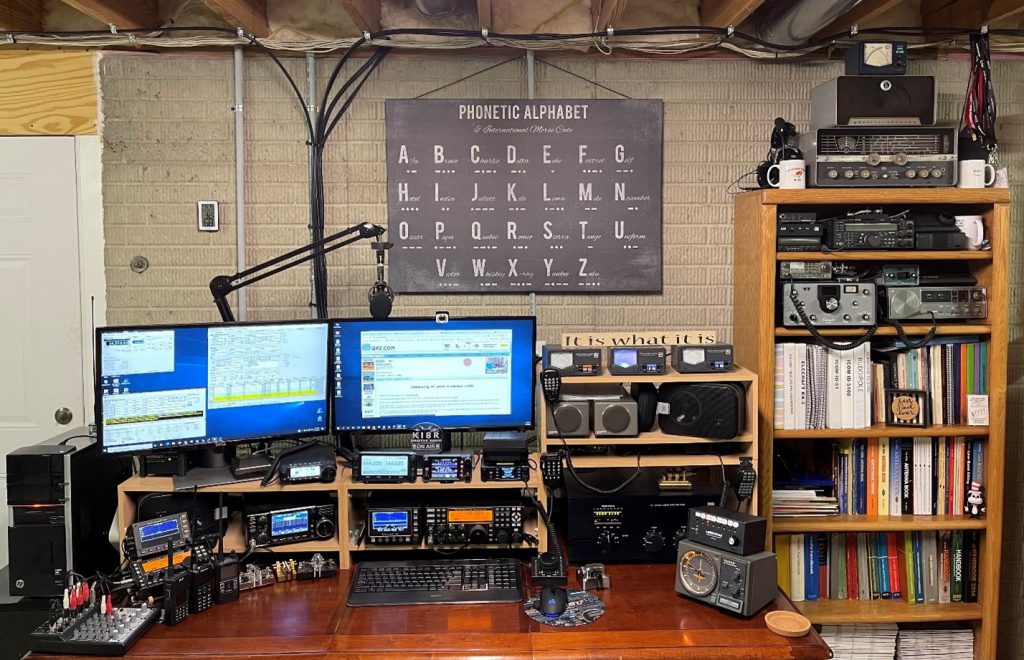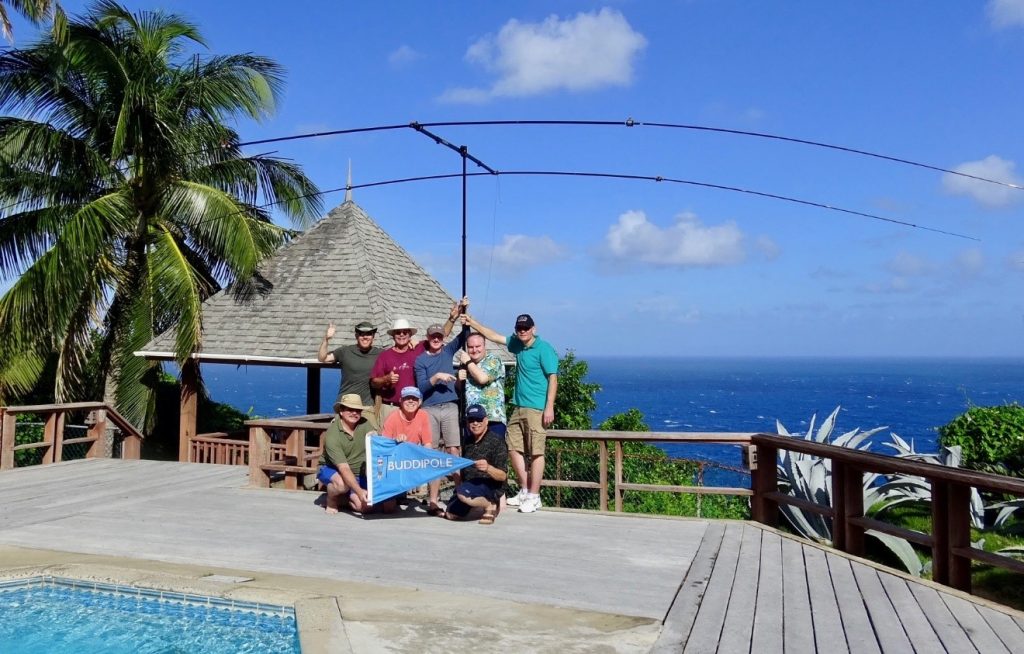Have you ever wondered who was the ham on the other end of your call to DX Engineering? Well, we thought you’d like to know.
OnAllBands has been running a series of posts highlighting members of DX Engineering’s customer/technical support team—all accomplished Elmers ready to answer questions whether you’re building your next antenna or deciding which coaxial cable is best for your station.
Today we turn our spotlight on Michael Murphy, KI8R, who joined DX Engineering several months ago. Licensed at the age of 16, he became the proud owner of his first rig shortly thereafter. As he writes on his website, “the rest was history.”
With more than four decades of CW operation (his first love), contesting, chasing DX, SOTA activations, antenna building (and climbing), working digital modes, EMCOMM, DXpeditioning, and other activities under his belt, Michael provides customers, both novice operators and seasoned hams, with a wealth of knowledge and insights. He currently lives on “three acres of antenna nirvana (no restrictions)” near Lancaster, Ohio, where he serves as president of the Capital City Repeater Association. Michael is married to Kristen, KA8YCO, and is the father of four boys.
Michael was kind enough to answer a few questions for OnAllBands about how he got started and his longtime passion for ham radio. We know you’ll enjoy talking to him as much as we did.
What first got you interested in ham radio? Do you remember getting your first license? What about your first QSO?
My father had a Hallicrafters SX-110 receiver. My parents told me that when I was two or three years old, I would stand in front of it for hours turning knobs and flipping switches. I also had an uncle who we would visit every year or so who was a ham. His call was K0IPM. I remember listening to him talk on the radio when we visited.
Fast forward to my teenage years. My brother had an all-band radio. It was awful, but while playing with it I found the local repeater on 146.76 and listened to it for hours. One day, they had an announcement that a local club was offering a Novice class at the local science center in Columbus. I talked my parents into taking me there and soon after got my first license. My original call was KA8KPP. The following year I got my General and then Advanced license. After I got my Advanced license, I changed my call and got KD8OK. In 1989 I decided to go for the Extra. After I got interested in contesting, I decided to look for a vanity call and wound up with KI8R.
One of my first QSOs was on Christmas day 1980. I was still a Novice. My parents helped me buy my first radio as a Christmas gift. It was a Kenwood TS-830s. I only had a CB ground plane on the roof. I hooked it up, called CQ and worked a station in Germany. What a rush!
Do you have a favorite contact you’ve made? What’s the story behind it?
One contact that stands out was with John, HK3C. I was at one of my boys’ soccer practices and had an Icom 706mk2g and a hamstick on the back of our van. I was listening to John in Colombia talking to stations in North America and called him. We talked for over a half hour that evening. I’ve since worked John a number of times and had the privilege of meeting him at Hamvention one year.
What do you enjoy most about ham radio?
Friendships. I met my best friend (KU8S) on 15M CW one afternoon. We have known each other for at least 40 years.
I’ve been licensed for over 40 years. In that time, I have done a number of things, from DXing to working on and building repeater systems. I even climbed a commercial TV tower (13 different times) to install antennas and feedline. I’ve also been on top of a water tower a few times as well. The highest I’ve ever climbed is 490 feet and, no, I would not do that again.
In the past seven or so years I have developed an interest in contesting, specifically CW contesting. I have been and currently am on the board of the Capital City Repeater Association, now serving as president. I also have been on the board of the old Columbus Amateur Radio Association.
I see you have an interest in CW. What attracted you and keeps you interested in this part of the hobby?
CW to me is a skill. It takes time to learn and time to get better, but also takes time to keep up your speed. I find that it is much easier to pull a weak signal out of the noise on CW than on SSB.
What advice do you have for people who are thinking of getting into the hobby or to those who have just received their Tech license?
Ham radio is, in my opinion, the greatest hobby in the world.
For those who have just gotten their Technician or General, I encourage them to keep going while they still have the momentum.
Ham radio is a hobby of hundreds of hobbies—VHF/UHF repeaters, amateur satellites, EME (moon bounce), DXing, contesting, rag-chewing, etc. My advice is find a facet of the hobby that interests you and learn as much as you can about it. If that starts to get old, look for something else. There is always something else to try with this wonderful hobby.
Talk about your areas of expertise and how this expertise will benefit DX Engineering customers.
The best part of my job is getting to talk to people who are interested in getting into the hobby or have just gotten licensed. Many of them are unsure of where to start.
Since I’ve been licensed for over 40 years and have been active for the whole time, I’ve gotten to experience a lot of different facets of the hobby including DXing, contesting, CW, SSB, a little digital, VHF/UHF, repeater building, DMR, D-STAR, Fusion, antenna building, ARES, the list goes on.
Thank you, Mike! Is there anything you’d like to add about your ham radio experiences?
In 2016, I was able to travel to St. Lucia and operate as J6/KI8R. I spent nine days on the island with a group of guys who I had never met before except for Budd, W3FF. We operated with nothing but Buddipole antennas and had a blast. I made over 3,000 Qs, 99.8% of which were CW. It was a ton of fun being the DX station. I can’t wait to do it again.
Because of ham radio, I met my wife, have built lifelong friendships, gotten jobs, been able to serve at public service events, and visited places I likely never would have seen.
Michael’s current station


Operating from St. Lucia in 2016 (Michael is on the far right)

Helping operators log CW QSOs in St Lucia

